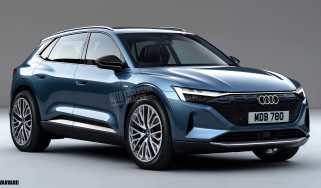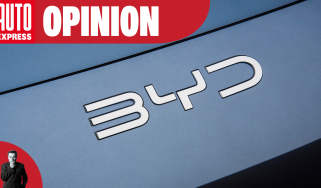Dry handling
Our tyres are pushed to the limit on track – but which performed best?
There wasn’t much between our tyres in terms of lap times, but the experience from the driver’s seat can be quite different. Some require much more steering lock to achieve the same result as rivals, or lack the sharpness of better-suited rubber.
There were no question marks over the performance of eventual winner Bridgestone, with the ER300 ideally matched to the Passat. The tyre provided great turn-in to corners and took our chicane easily, with no need to lift off, which inspired confidence.
Second home was Continental’s PremiumContact 2, which also felt quite secure, thanks to sharp steering from the moment the nose is pointed in to the turn.
Third-placed BFGoodrich posted a similar time, but made a lot more fuss about it. The g-Force Profiler required more lock than our top two, and vibrated harshly in the long turns.
Michelin gave a much better ride, and coped particularly well on the power, although it took a little longer than its rivals to warm up. Its time was matched by the Dunlop, which was well balanced on our test car.
Tyres that are good in the wet tend to struggle in the dry, as all those big grooves fail to put enough rubber on the tarmac. But fifth-placed Vredestein proved to be the exception. The Sportrac3 coped well when accelerating, although it made much more noise than its rivals.
Used - available now

2022 Volkswagen
Passat GTE
26,344 milesAutomaticPetrol1.4L
Cash £18,997
2024 Volkswagen
Golf
32,012 milesManualPetrol1.5L
Cash £18,797
2022 Volkswagen
ID.3
28,561 milesAutomaticElectric
Cash £18,497
2023 Ford
Puma
15,107 milesAutomaticPetrol1.0L
Cash £17,663Hankook and Matador tied for seventh, but the Ventus Prime needed lots of steering lock, and vibrated severely on the limit. While the Aquila Evo fared better, relishing the longer turns, it struggled through the tight hairpins, where we had to hold back on the throttle.
The balance of the Yokohama was questionable. It let the rear move at the beginning of the turns, and required a fair amount of lock to get through them. This is a disappointing result, as we would have expected the dry road specialist to have been nearer the top of the table.
Pirelli’s P7 was another tyre that allowed too much movement at the rear. It’s good for lap times, but doesn’t inspire so much confidence. While the Kumho kept the back end under control better, it still slid a little. What’s more, it lacked sharpness and vibrated when pushed hard.
Fulda and Goodyear brought up the rear, along with Maxxis. The HydraGrip and Progresso suffered lots of tyre screech, and lacked our top five’s precision and sharpness. While the MA-Z1 turned in well, it scrubbed sideways as the forces built up. Both Pirelli and Uniroyal allowed the rear to move too much as well.






